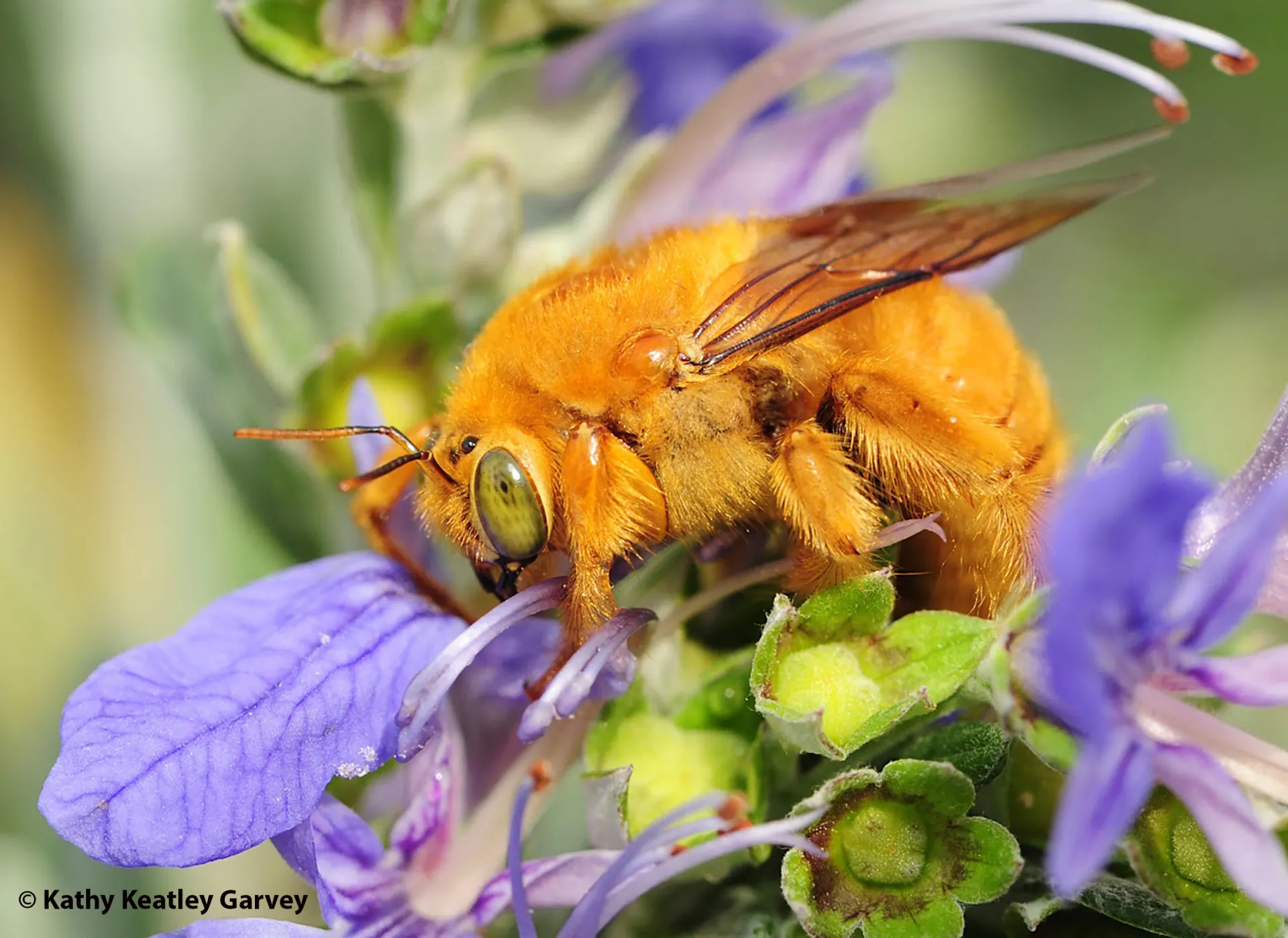
Bug Squad Blog
By Kathy Keatley Garvey
I'm honored and humbled to have one of my images showcased at the annual Insect Salon hosted by the Pacific Branch, Entomological Society of America (PBESA) at its recent meeting in Salt Lake City. It won a second-place award. PBESA covers 11 Western states, plus parts of Canada and Mexico and U.S. territories.
It's a joy to capture images of insects!
This is the male Valley carpenter bee, Xylocopa sonorina, nicknamed "the teddy bear bee." The male is blond with green eyes, while the female is a solid black--a perfect case of sexual dimorphism.
The late Robbin Thorp (1938-2019), UC Davis distinguished emeritus professor of entomology, used to net this male species in the UC Davis Bee Haven and show it at a Bohart Museum of Entomology open house. He would hold it and invite youngsters to seek a closer look. "Boy bees don't sting," he assured them.
Some folks think it's a "golden bumble bee," but it is not. Some think it's a pest, but it isn't. One UC Master Gardener, thinking it was a weird-looking pest, crushed it.
You've probably seen the female Valley carpenter bee buzzing around the garden or drilling holes in unvarnished wood to make her nests. She's also mistaken for a bumble bee. This carpenter bee, one of three southwestern U.S. species found from western Texas to northern California and the eastern Pacific Islands, was formerly known as X. varipuncta.
The genus has 31 subgenera and 500 species worldwide. It was first described as X. sonorina in 1874 from specimens collected in Hawaii, according to Wikipedia. "Until 1956, it was thought that X. sonorina came from the Sunda Islands, but in a paper published that year, M. A. Lieftinck showed that Smith's interpretation of the original specimen labels was in error: Smith had mistakenly read the label of X. sonorina as meaning the Sunda Islands instead of the Sandwich Islands. In 1899, R. C. L. Perkins described the same species as Xylocopa aeneipennis, and in 1922, P. H. Timberlake claimed that the Hawaiian Xylocopa was the same as the mainland X. varipuncta, that had been named in 1879, and Roy Snelling predicted in 2003 that X. varipuncta would eventually be reclassified as a synonym of X. sonorina. This was confirmed in 2020 using DNA analysis, and as the name sonorina has seniority, this is the valid species name."
So, X. sonorina it is.

